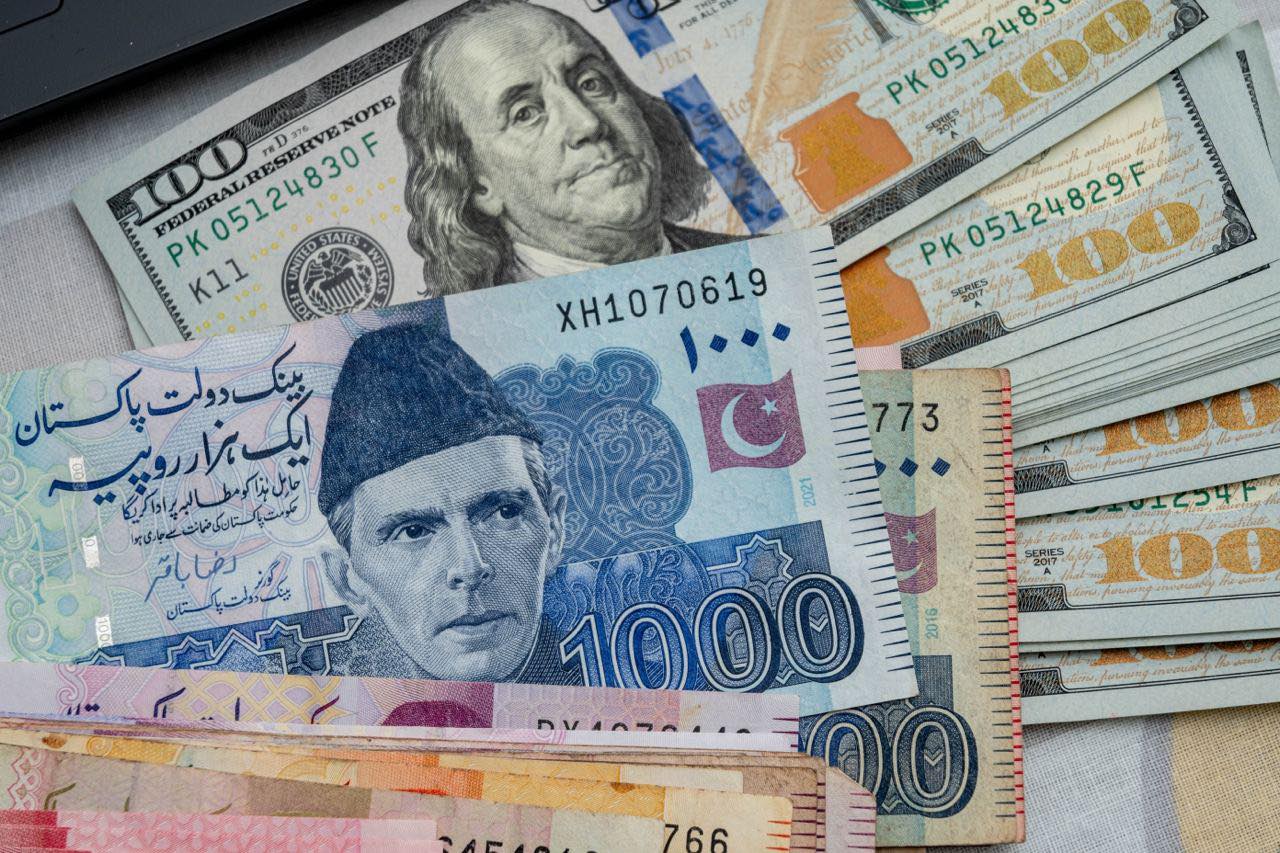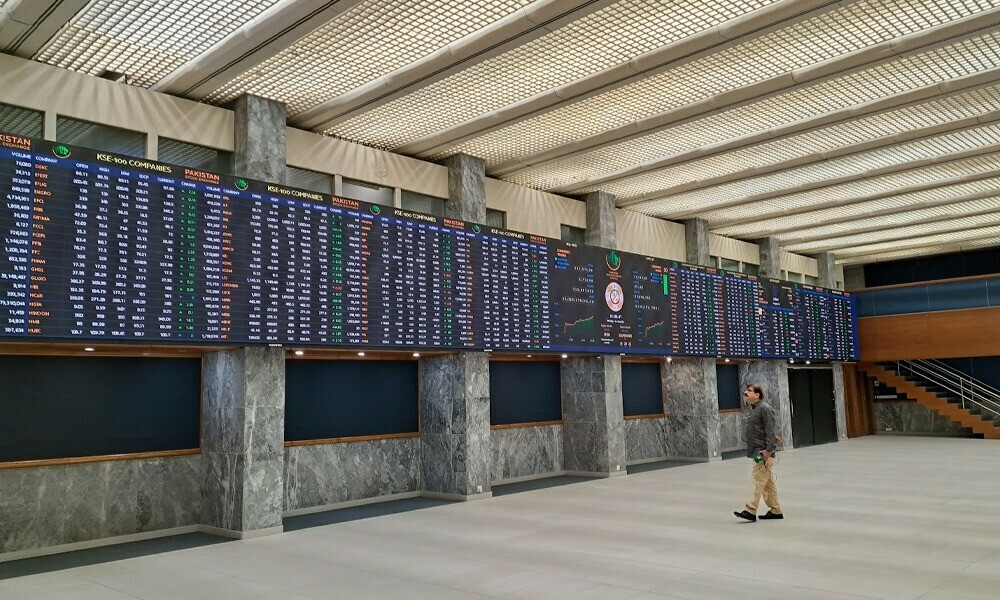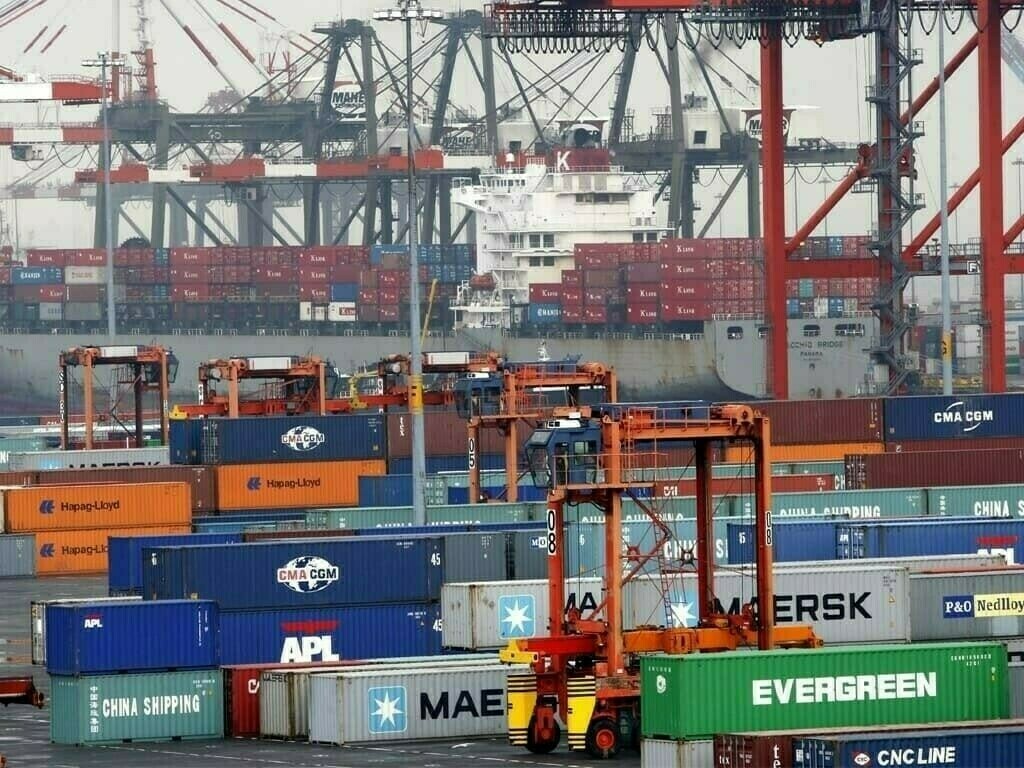PTBP Web Desk
The Pakistani rupee showed mild strength against the US dollar on Tuesday, appreciating by 0.06% during early trading hours in the inter-bank market. At 10:15 a.m., the local currency was observed hovering around Rs280.90, marking an increase of Re0.17 compared to the previous day’s close.
According to data shared by the State Bank of Pakistan (SBP), the rupee had closed at Rs281.07 on Monday. This moderate gain indicates a momentary strengthening of Pakistan’s local currency amid a mix of global financial developments and regional market adjustments.
The rupee’s marginal appreciation highlights a phase of relative stability in Pakistan’s foreign exchange market, following several months of volatility driven by external debt repayments, fluctuating remittances, and varying global oil prices.
Currency analysts noted that recent improvements in the country’s foreign exchange reserves, supported by a steady inflow of remittances and better trade balance management, have contributed to the rupee’s resilience.
At the same time, controlled import demand and ongoing oversight by the SBP have helped moderate speculative trading, which often triggers erratic currency swings in the inter-bank market.
While the Pakistani rupee gained slightly, global currency markets remained largely stable in early Tuesday trading. The Japanese yen held its ground ahead of a crucial parliamentary vote expected to confirm Sanae Takaichi as Japan’s first female prime minister — a historic event with potential economic implications.
The yen was last reported 0.1% stronger at 150.61 per US dollar, after minor losses in the previous session. Market sentiment around the yen reflected investor caution as analysts speculated that Takaichi’s anticipated policy stance — backed by Japan’s right-wing opposition party, Ishin — could increase government spending and complicate the Bank of Japan’s (BOJ) rate-hike plans.
Elsewhere, other major currencies showed minimal movement:
- The British pound (sterling) traded at $1.3408, maintaining its previous levels.
- The euro edged slightly higher by 0.08% to $1.1651, supported by easing political tensions in France.
- The US dollar index remained almost unchanged at 98.55, signaling overall calm in the currency market.
- The Australian dollar gained 0.13%, reaching $0.6521, reflecting cautious optimism among traders.
Global traders also monitored the ongoing US government shutdown, which has disrupted access to fresh economic data ahead of next week’s Federal Reserve meeting. This uncertainty left investors with limited guidance, causing most currencies to trade within narrow ranges.
Experts believe that the Federal Reserve’s stance on interest rates will likely influence emerging markets like Pakistan, as any tightening or easing could affect capital flows and investor sentiment toward developing economies.
A crucial factor influencing global and local currencies alike — oil prices — extended their decline for a second straight session on Tuesday. Market sentiment weakened amid concerns over excess global supply and fears of lower demand stemming from rising tensions between the United States and China, the world’s largest oil consumers.
At 0343 GMT, Brent crude futures dropped 17 cents (0.28%) to $60.84 per barrel, while U.S. West Texas Intermediate (WTI) crude for November delivery eased 0.52% to $57.22 per barrel. The more active December WTI contract also fell 19 cents (0.33%) to $56.83.
Lower oil prices typically benefit oil-importing countries like Pakistan, helping to reduce the import bill and strengthen the rupee by easing pressure on foreign reserves. Analysts noted that the current downtrend in crude oil could continue if demand concerns persist and geopolitical frictions deepen.
Pakistan’s economic policymakers have been focusing on stabilizing the rupee through a combination of reforms and external financial support. The continuation of the IMF standby agreement, along with expected inflows from friendly nations, has eased short-term concerns about liquidity and dollar availability.
Additionally, efforts to curb currency speculation and enhance export competitiveness have begun to reflect positively in the inter-bank market. If this trend continues, experts anticipate that the rupee could maintain its range-bound position around the 280–282 mark in the near term.
However, they caution that global monetary tightening, changes in oil price trends, or delays in foreign inflows could quickly reverse this temporary strength.
Currency dealers across Karachi, Lahore, and Islamabad reported that trading remained steady, with no significant volatility in demand or supply. Investors appeared cautious, closely watching the Federal Reserve’s policy direction and its potential impact on the dollar’s strength.
In contrast, regional markets like India and Bangladesh experienced mild depreciation in their respective currencies, largely driven by rising import costs and global commodity fluctuations. Pakistan’s relatively smaller decline last week followed by Tuesday’s rebound signals that currency management measures implemented by the central bank may be achieving desired results.




